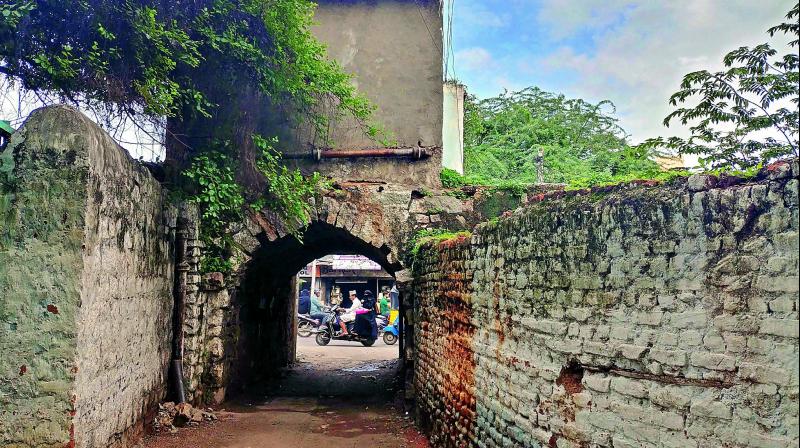Telangana drops guard on Hyderabad's historic fortified wall

Hyderabad: The fortified wall which guarded Hyderabad for centuries is now in need of protection. The impressive centuries old wall – 18 feet high and 8 feet wide runs six miles around the city of Hyderabad.
Ironically, with no government department considering it a heritage piece, there is no effort to preserve it.
“Actually, it is nobody’s baby. So no government agency is interested in maintaining it even though only remnants of the wall are seen here and there. Soon it will be in the history books,” laments, P. Anuradha Reddy, a heritage activist and member of INTACH.
She explained that in Ahmedabad, a similar wall of fortification is considered a heritage structure and the local authorities look after its upkeep.
The wall, according to historians, had 13 darwazas (gates) and 13 khirkhis (wicked gates) and it ran through Aliabad, Fatehdarwaza, Doodhbowli, Puranapul, Petlaburj, Nayapul, Dabeerpura, Mir Jumla Talab and Lal Darwaza.
Now just a portion of the wall remains at Aliabad, Lal Darwaza, Sultanshahi, Tallabkatta and Dabeerpura areas.
“Over the decades people slowly demolished the wall as it posed danger to locals and even the local leadership or municipal authorities did not bother about its upkeep,” says Nisaaruddin, a resident of Aliabad.
“Whenever relatives come they show interest in knowing about the historic significance of the wall. Whatever we know about it we tell them,” said Moiz Ahmed, another local resident of the area.
According to historian, M. A. Qayyum, the wall was designed in such a manner that horses could patrol the pathways. “At strategic locations a ‘Burj’ (place where cannons are placed) was constructed and cannons mounted on it,” he explained.
The construction of the wall started during the rule of Abdul Hassan Tana Shah, the last Qutb Shah ruler, and ended during the Asaf Jah period. The wall had 12 darwazas initially. One – Afzal Darwaza – was added later.
“All the darwazas were made of iron and heavy wood. Armed guards manned the entrances. The gates closed during the evening and opened only in the morning,” said Mr Qayyum.
He explains, that large parts of the wall crumbled during the floods of 1908 and then in 1950’s, the decision to pull down the wall to allow free flow of traffic, sounded its death knell.
“All the gates were being pulled down and people enthusiastically participated in the destruction of the wall. However, timely representation by the heritage activists saved two gates and portions of the wall,” Mr Qayyum recalls.
The rulers then also constructed rest-houses – known as ‘sarai’, where travellers to the city stayed overnight when the gates were closed.
When contacted, State Archeological Department officials say that they look after the upkeep of only two darwaza’s, the Puranapul darwaza and the Dabeerpura darwaza. “Recently we took up restoration works of the Puranapul darwaza. We don’t look after the upkeep of the wall.
It is not a listed heritage monument,” said Mr B. Narayana, Deputy Director Department of Archeology and Museums.
List of Darwazas
Puranapul Darwaza. (Narva Darwaza) Existing)
Dabeerpura Darwaza. (Existing)
Aliabad Darwaza.
Fateh Darwaza.
Doodhbowli Darwaza.
Afzal Darwaza.
Lal Darwaza.
Gowlipura Darwaza.
Dilli Darwaza
Chaderghat Darwaza
Mir Jumal Darwaza
Champa Darwaza.
Yakutpura Darwaza.

